Why Ceramics is the Best Medium for Expressing Creativity
When it comes to artistic expression, ceramics stands out as one of the most captivating mediums available. Why, you ask? Well, ceramics offers a unique blend of versatility, tactile engagement, and a profound personal connection that few other art forms can match. Imagine molding a lump of clay with your hands, feeling its cool, damp texture, and transforming it into a beautiful piece of art. It’s not just about the final product; it’s about the journey of creation itself. In this article, we will delve into the remarkable qualities of ceramics that make it an exceptional choice for artists seeking to express their creativity.
Ceramics can be shaped into countless forms, allowing artists to explore various styles and techniques. This versatility enables both functional and decorative art, catering to diverse creative expressions. From delicate porcelain vases to robust stoneware dishes, the possibilities are endless. Whether an artist wants to create a practical item for everyday use or a stunning sculpture to adorn a gallery, ceramics can accommodate both desires. The medium invites experimentation, enabling artists to push boundaries and explore new horizons in their work.
The tactile nature of clay invites hands-on engagement, encouraging artists to connect with their materials. This sensory interaction fosters creativity and allows for spontaneous artistic decisions during the crafting process. When you sink your fingers into the soft clay, it’s like a dance between artist and medium, where every touch and manipulation can lead to unexpected outcomes. This connection is vital; it’s where ideas come to life. The texture and weight of the clay can inspire new designs and forms, making each session at the pottery wheel or workbench a unique adventure.
Handbuilding techniques, such as pinch, coil, and slab construction, offer artists the freedom to create unique shapes. These methods encourage experimentation and innovation, making handbuilding a popular choice for personal expression in ceramics. Each technique has its charm:
- Pinch Pots: Pinch pots are a simple yet effective handbuilding technique that allows artists to create organic shapes. This method promotes creativity by encouraging intuitive design and personal touches in each piece.
- Coil Building: Coil building involves stacking rolled clay coils to form larger structures. This technique provides opportunities for intricate designs and complex forms, enhancing the artist's ability to express their individual style.
Glazing adds color, texture, and finish to ceramic pieces, expanding the creative possibilities. Artists can experiment with various glazing methods to achieve unique effects, making each work a distinct representation of their vision. The transformation that occurs during the glazing process is nothing short of magical; a dull, raw clay form can burst into vibrant life with the right glaze. This ability to manipulate color and texture allows artists to tell their stories visually, creating pieces that resonate on multiple levels.
Working with clay fosters a deep personal connection between the artist and the medium. This relationship can lead to greater emotional investment and more meaningful artistic outcomes. When artists pour their heart into their work, it becomes an extension of themselves. The act of creating ceramics is often therapeutic, providing a space for reflection and self-discovery. Each piece crafted carries a piece of the artist’s journey, making it not just an object, but a story waiting to be told.
Ceramics often tell stories, reflecting the artist's experiences, culture, and emotions. This narrative aspect enhances the creative process, allowing artists to communicate deeper meanings through their work. Just as a writer uses words to convey thoughts and feelings, a ceramic artist uses clay to express their inner world. The shapes, colors, and textures chosen can evoke memories, convey messages, or represent cultural heritage, making ceramics a powerful medium for storytelling.
Ceramics hold cultural significance across various societies, serving as a medium for preserving traditions and storytelling. Artists can draw inspiration from these cultural roots, infusing their work with historical context and personal interpretation. This connection to history enriches the creative process, allowing contemporary artists to pay homage to the past while forging their own paths. In this way, ceramics not only serve as a canvas for personal expression but also as a bridge connecting generations and cultures.
1. What makes ceramics a unique art medium?
Ceramics is unique due to its versatility, tactile nature, and the deep personal connection it fosters between the artist and their work. Artists can create both functional and decorative pieces, allowing for a wide range of creative expression.
2. Can anyone learn to work with ceramics?
Absolutely! Ceramics can be learned by anyone, regardless of skill level. With practice and guidance, anyone can create beautiful ceramic pieces.
3. What are some common handbuilding techniques?
Common handbuilding techniques include pinch pots, coil building, and slab construction. Each technique offers different possibilities for creativity and expression.
4. How does glazing affect ceramic art?
Glazing affects ceramic art by adding color, texture, and finish. It can completely change the appearance of a piece, allowing artists to achieve unique effects and personal styles.
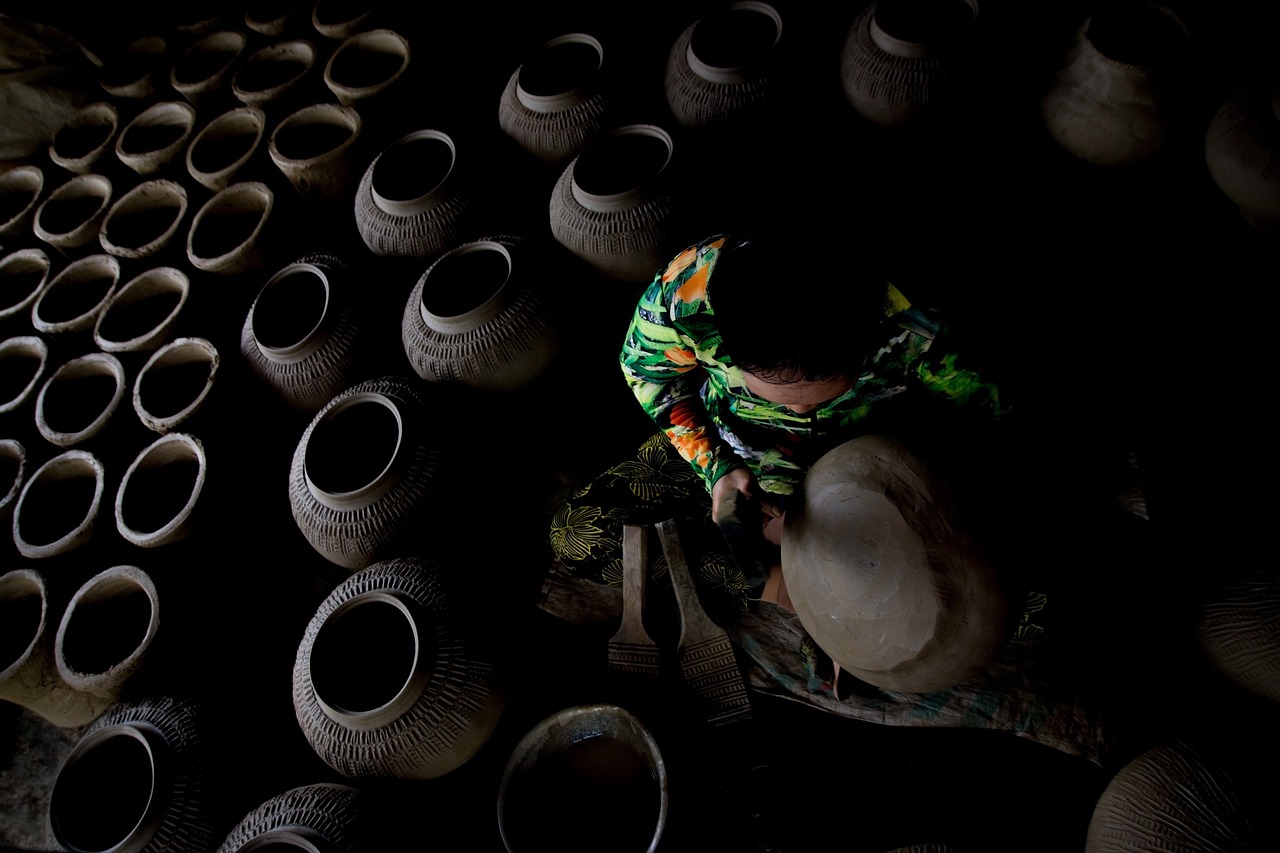
Versatility of Ceramics
When it comes to artistic expression, ceramics truly shines as a versatile medium that allows artists to explore an array of styles and techniques. From functional pottery to intricate sculptural pieces, the possibilities are nearly endless. This versatility not only caters to the different needs of artists but also invites a broad spectrum of creativity. Imagine walking into a gallery filled with works that range from elegant dinnerware to abstract sculptures; each piece tells a unique story and showcases the artist's personal touch.
One of the most appealing aspects of ceramics is its ability to be shaped into countless forms. Artists can manipulate clay in various ways, enabling them to create everything from simple bowls to complex installations. This flexibility allows for both functional and decorative art, making ceramics an ideal choice for those who want to merge utility with beauty. For instance, a ceramic mug can be both a practical item for your morning coffee and a stunning piece of art that reflects the artist's vision and creativity.
In addition to its physical adaptability, ceramics can also embody a wide range of styles, from traditional to contemporary. Artists can draw inspiration from various cultures, historical periods, or even personal experiences, resulting in pieces that resonate on multiple levels. The ability to incorporate different techniques, such as handbuilding or wheel throwing, further enhances this versatility. Each method offers unique opportunities for artistic expression, allowing artists to find their own voice within the medium.
Furthermore, the versatility of ceramics extends to the glazing process, which can dramatically alter the final appearance of a piece. Artists can experiment with various glazing techniques, such as satin, matte, or glossy finishes, and even layer different glazes to create stunning visual effects. This opens up a world of possibilities, allowing for an endless exploration of colors, textures, and finishes. Whether an artist chooses to create a vibrant, colorful piece or a subtle, monochromatic one, the choices are vast and the results can be breathtaking.
In conclusion, the versatility of ceramics makes it an exceptional medium for artistic expression. Its ability to adapt to various styles, techniques, and personal interpretations allows artists to explore their creativity without limitations. So whether you’re a seasoned ceramicist or a curious beginner, the world of ceramics is waiting for you to dive in and discover the endless possibilities it offers.
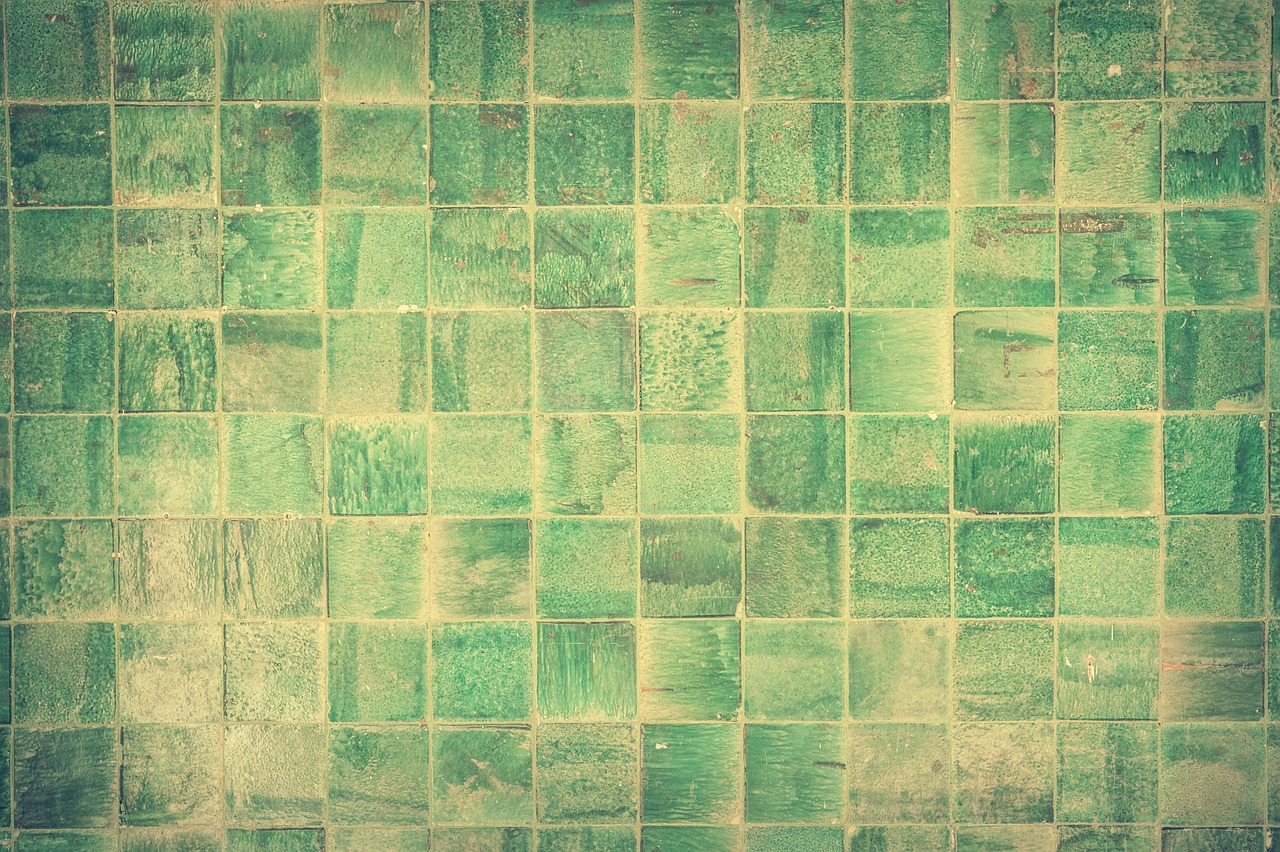
Tactile Experience
The tactile nature of clay is one of the most captivating aspects of working with ceramics. Unlike many other artistic mediums, clay invites a personal and hands-on engagement that is both fulfilling and inspiring. When you dive your hands into a lump of clay, you’re not just manipulating a material; you’re embarking on a sensory journey that awakens your creativity. This direct interaction with the medium allows artists to feel the texture, temperature, and moisture of the clay, which can significantly influence their artistic decisions.
As you knead and shape the clay, it becomes an extension of yourself, responding to your touch and intentions. This intimate relationship fosters a sense of connection that is hard to replicate with other materials. Imagine sculpting a piece where every indentation and curve is a reflection of your mood, your thoughts, or even your day-to-day experiences. This is the magic of ceramics; it transforms your emotions into tangible forms.
Moreover, the tactile experience is not just about the initial shaping of the clay. It extends to the entire process, including the moment of glazing. The act of applying glaze can be a sensory delight, as you brush or pour vibrant colors over your creation, watching how they interact with the surface. Each stroke is a dance between the artist and the medium, leading to spontaneous decisions that often result in unexpected beauty.
To illustrate the significance of tactile experience in ceramics, consider the following:
| Aspect | Description |
|---|---|
| Physical Connection | Working with clay allows for a physical connection that can enhance creativity. |
| Emotional Expression | Artists often express their emotions through the tactile manipulation of clay. |
| Spontaneity | The hands-on nature of ceramics encourages spontaneous and innovative decisions. |
In essence, the tactile experience of ceramics is a journey that transcends mere creation. It becomes a form of self-expression and exploration, where the artist can lose themselves in the process, often discovering new aspects of their creativity along the way. This connection not only enhances the artistic output but also enriches the artist’s personal journey, making every piece a unique narrative born from the hands that shaped it.
- What is the importance of tactile experience in ceramics? The tactile experience allows artists to connect physically and emotionally with their medium, fostering creativity and spontaneous artistic decisions.
- How does tactile interaction influence artistic decisions? The texture and responsiveness of clay can inspire different techniques and styles, leading to unique outcomes based on the artist's feelings and experiences.
- Can tactile experience enhance the storytelling aspect of ceramics? Yes, the physical engagement with clay can help artists express their stories more vividly, as each piece embodies their personal touch and narrative.
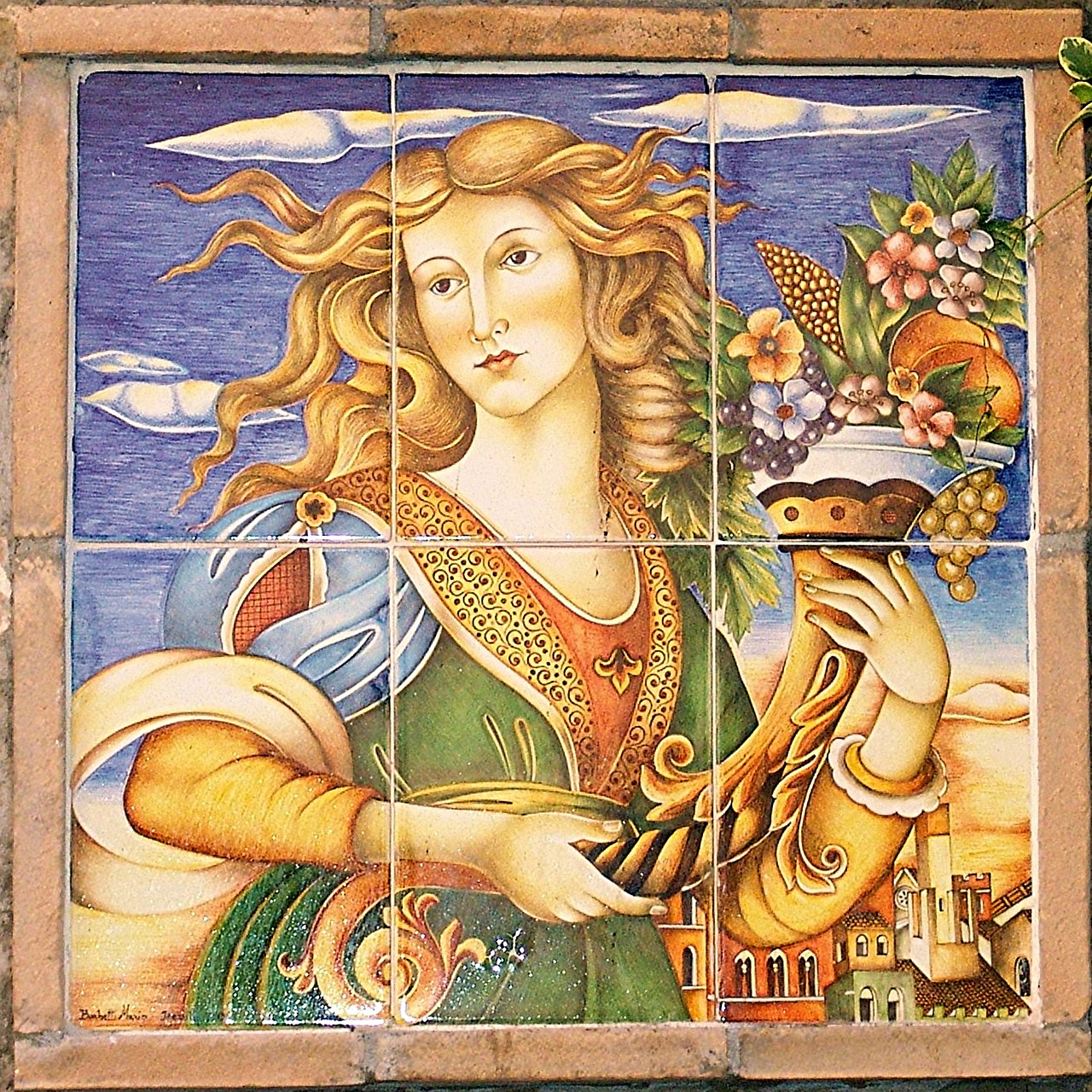
Handbuilding Techniques
When it comes to ceramics, are a game changer. They offer artists the freedom to explore their creativity without the constraints of a potter's wheel. Imagine shaping the clay with your own hands, feeling its cool, damp texture as you mold it into something uniquely yours. This tactile experience is where the magic begins! There are several popular handbuilding methods that artists often use to express their individual styles, including pinch pots, coil building, and slab construction.
Pinch pots are perhaps the simplest of these techniques. They involve taking a ball of clay and using your fingers to pinch and shape it into a bowl or vessel. This method is not just about creating functional items; it’s about the intuitive design that comes from letting your hands guide the process. Each pinch pot is a reflection of the artist’s personality, with organic shapes that can’t be replicated. The beauty lies in the imperfections, making each piece a one-of-a-kind creation.
On the other hand, coil building takes things up a notch. This technique involves rolling out long strands of clay, or coils, and stacking them to create larger and more complex structures. Think of it like building a tower with clay ropes! This method allows for intricate designs and the ability to add various textures and patterns to your work. Artists often find themselves lost in the process, as each coil adds a layer of depth and character to the final piece.
Then there’s the slab construction method, which is perfect for those who enjoy geometric shapes and clean lines. By rolling out flat slabs of clay, artists can cut and assemble pieces like a puzzle, creating everything from plates to sculptural forms. This technique encourages a different kind of creativity, where precision meets artistic expression. The possibilities are endless, and the only limit is your imagination!
In summary, handbuilding techniques in ceramics are not just about creating objects; they are about connecting with the material and allowing your creativity to flow freely. Whether you prefer the organic feel of pinch pots, the intricate designs of coil building, or the structured elegance of slab construction, each method offers a unique avenue for personal expression. So, why not grab some clay and start experimenting? You never know what incredible creations await you!
- What is handbuilding in ceramics? Handbuilding is a method of creating ceramic pieces without the use of a potter's wheel, allowing for more personal expression and creativity.
- What are the main handbuilding techniques? The main techniques include pinch pots, coil building, and slab construction.
- Can beginners try handbuilding techniques? Absolutely! Handbuilding is a great way for beginners to start working with clay and develop their skills.
- How can I make my handbuilt pieces unique? Experiment with textures, shapes, and glazing techniques to add your personal touch to each piece.

Pinch Pots
Pinch pots are not just a playful introduction to the world of ceramics; they are a gateway to unleashing creativity in its most organic form. Imagine the gentle embrace of clay between your fingers as you mold and shape it into a vessel that reflects your unique vision. This technique, which involves simply pinching the clay into shape, allows artists to explore their intuition and creativity without the constraints of more complex methods. The beauty of pinch pots lies in their simplicity; they can be as small as a thimble or as large as a bowl, each one telling a different story through its form.
One of the most captivating aspects of pinch pots is their organic nature. Each piece is inherently unique, bearing the fingerprints and personal touches of the artist. This tactile experience fosters a deep connection between the creator and their work, making every pinch a moment of personal expression. As you create, you might find that your emotions and thoughts naturally influence the shape and design of your pot, leading to a piece that resonates with your inner self.
Moreover, pinch pots are incredibly versatile. They can serve various purposes, from functional items like bowls and cups to purely decorative pieces that add character to your living space. The following are some common uses for pinch pots:
- Functional Art: Use them as small bowls for snacks, jewelry holders, or even as planters for tiny succulents.
- Decorative Pieces: Paint and glaze them to create eye-catching centerpieces or gifts.
- Learning Tools: Perfect for beginners to understand the basic properties of clay and the creative process.
In addition to their functional and aesthetic qualities, pinch pots also encourage a sense of playfulness in art-making. When you sit down to create a pinch pot, you're invited to let go of perfectionism and embrace spontaneity. This can lead to unexpected results, which often turn out to be the most rewarding aspects of the creative process. The act of pinching and shaping the clay can be meditative, allowing artists to lose themselves in the moment, much like the way a musician might get lost in a melody.
Ultimately, pinch pots serve as a reminder that art does not always have to be complicated to be meaningful. They embody the essence of creativity—an exploration of form, texture, and personal expression. So, whether you are a seasoned potter or a curious beginner, the humble pinch pot is an excellent way to dive into the world of ceramics and discover the joy of creating something truly your own.
- What materials do I need to start making pinch pots? You will need clay, a smoothing tool, and some basic sculpting tools. Optional items include paints and glazes for finishing touches.
- Can I use any type of clay for pinch pots? Yes, but earthenware or stoneware clay is commonly used for beginners due to its workability and durability.
- How do I glaze my pinch pot? Once your pot is dry and fired, you can apply glaze with a brush, dip it, or spray it, depending on the effect you want to achieve.
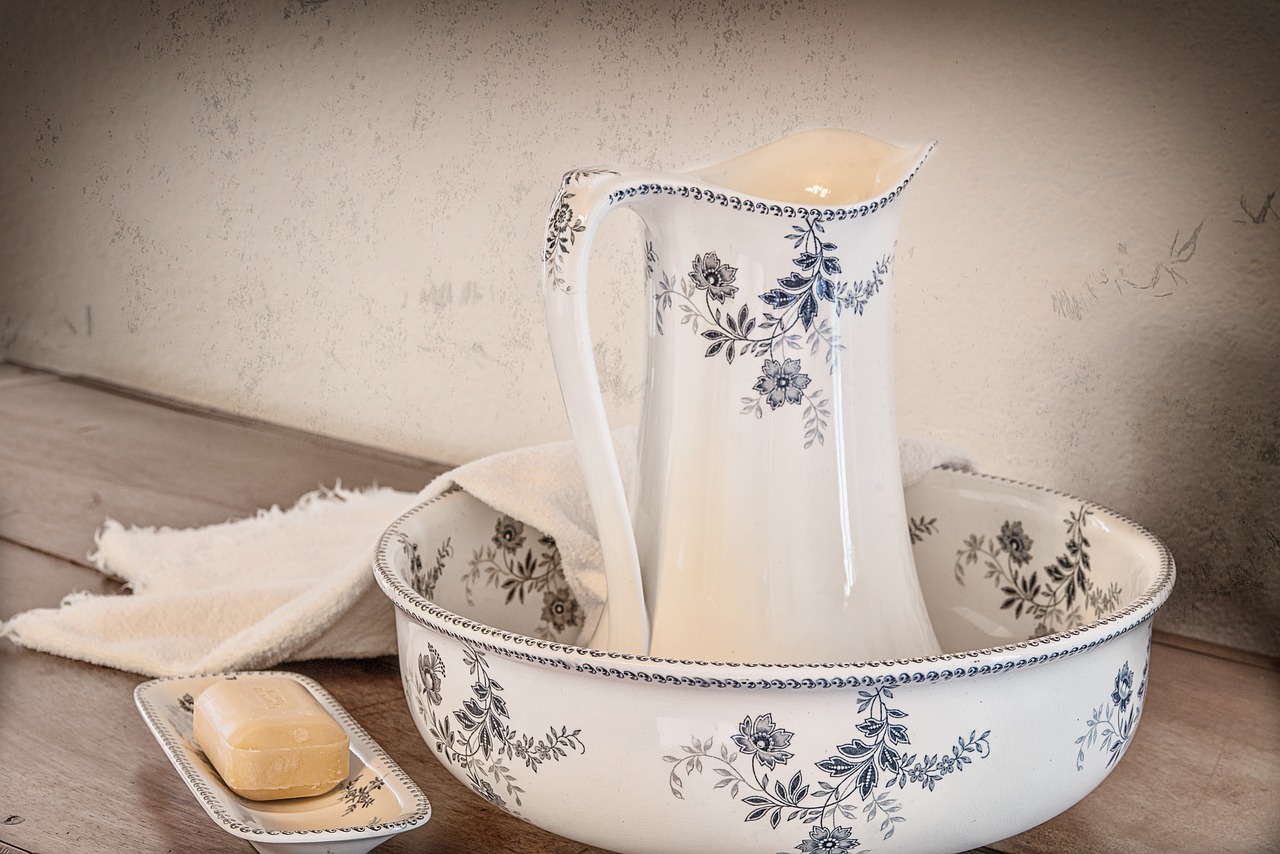
Coil Building
Coil building is a fascinating technique in ceramics that opens up a world of creativity for artists. By rolling out long strands of clay—think of them as thick spaghetti—artists can stack these coils to create a variety of structures. This method is not just about construction; it’s about exploration and innovation. The beauty of coil building lies in its versatility, allowing for both simple and complex forms. Whether you're crafting a small bowl or a towering vase, the possibilities are virtually endless.
One of the most thrilling aspects of coil building is the opportunity for intricate designs. As artists layer coils, they can manipulate the shapes, adding curves and twists that reflect their unique styles. This technique encourages a playful approach, where mistakes can lead to unexpected and delightful results. Imagine shaping your piece as if it were alive, responding to your touch and guiding your hands. The tactile nature of the clay enhances this experience, making it feel like a dance between the artist and the medium.
Moreover, coil building can be a deeply personal journey. Artists often find themselves pouring their emotions into their work, shaping each coil with intention. As they build, they might reflect on their experiences, allowing the piece to evolve organically. This connection transforms a simple block of clay into a storytelling medium, where each coil represents a moment, a feeling, or a memory. The finished product is not just a ceramic piece; it becomes a narrative that speaks to the artist's journey.
Additionally, the coil building technique can be easily adapted to suit various artistic visions. For instance, artists can:
- Experiment with different coil sizes to create varying textures.
- Incorporate other materials, such as glass or metal, to enhance their designs.
- Utilize decorative techniques, like carving or stamping, to add unique details.
In essence, coil building is not merely a method of construction; it is a profound way to express oneself artistically. It invites artists to embrace their creativity, explore new ideas, and ultimately create pieces that are not just functional but also deeply personal and meaningful. So, if you’re looking to dive into the world of ceramics, coil building might just be the perfect technique to unleash your inner artist!
Q: What materials do I need for coil building?
A: To get started with coil building, you will need clay, a work surface, water for smoothing, and various tools for shaping and decorating your piece.
Q: Can I combine coil building with other techniques?
A: Absolutely! Many artists blend coil building with other methods like slab construction or wheel throwing to create unique and intricate designs.
Q: How do I ensure my coils stick together?
A: To ensure your coils adhere properly, make sure to score (scratch) the surfaces where they meet and apply a little water or slip to create a strong bond.
Q: What are some common mistakes to avoid in coil building?
A: Some common pitfalls include using coils that are too thick, which can lead to cracking, or not allowing enough drying time between layers. Patience is key!
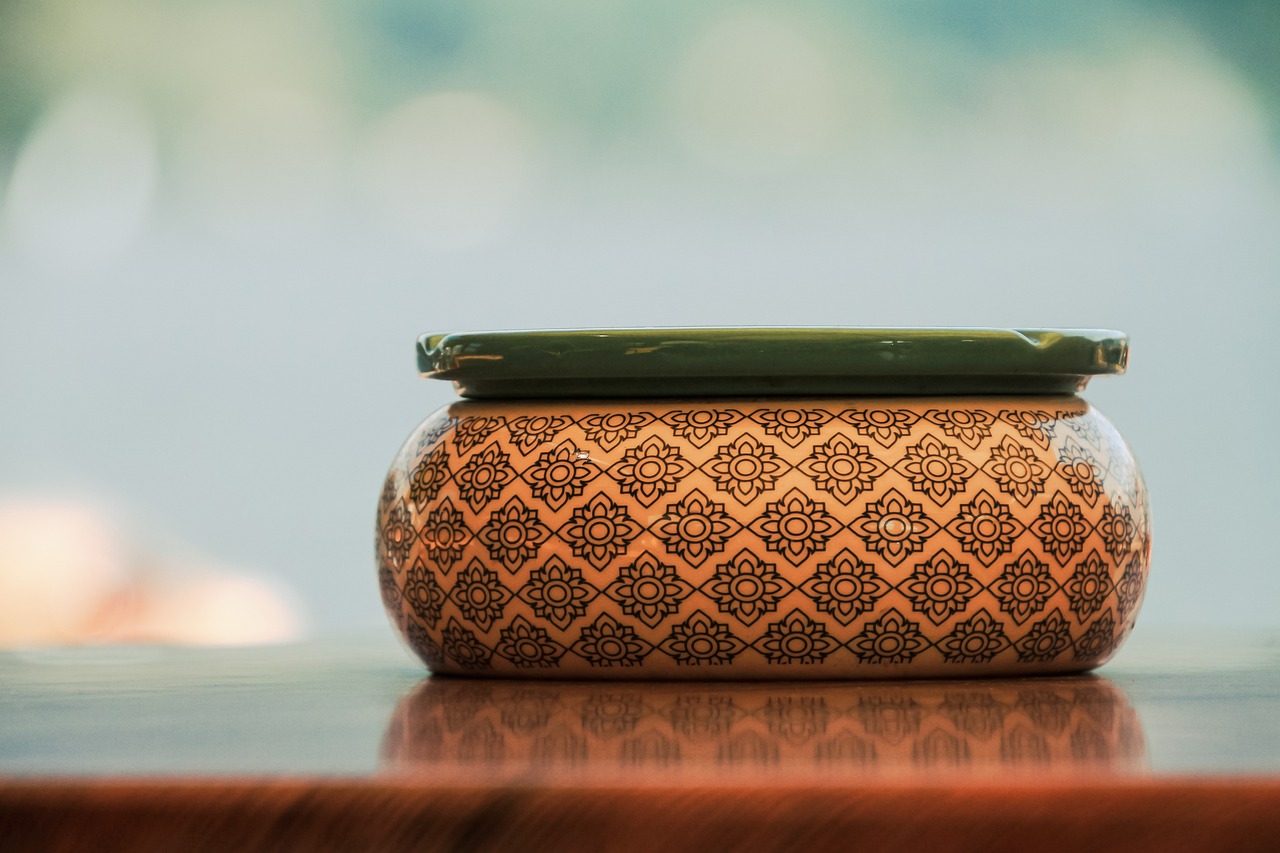
Glazing Techniques
When it comes to ceramics, glazing is like the cherry on top of a sundae—it takes a good piece and elevates it to something extraordinary. Glazing techniques are not just about adding color; they are about enhancing the texture, depth, and overall aesthetic of the ceramic work. The beauty of glazing lies in its versatility—artists can choose from a myriad of techniques to achieve the desired effect, each with its own unique outcome. For instance, the choice between transparent and opaque glazes can dramatically change how the underlying clay body is perceived.
One of the most exciting aspects of glazing is the opportunity for experimentation. Artists can mix glazes, layer them, or even apply them in different ways to create stunning visual effects. For example, a simple drip glaze can create a mesmerizing waterfall effect, while a crackle glaze can add an element of surprise with its intricate patterns. The unpredictability of how glazes react during firing can lead to delightful surprises, making each piece truly one-of-a-kind.
Here are some popular glazing techniques that ceramic artists often explore:
- Dip Glazing: This involves dipping the piece into a bucket of glaze, allowing for an even coating. It’s quick and efficient, perfect for larger items.
- Brushing: Artists can apply glaze with brushes to achieve detailed designs or patterns. This method allows for greater control over the application.
- Spraying: Using a spray gun, artists can achieve a smooth, even coat of glaze, which is especially useful for larger pieces or those with intricate details.
Moreover, glazing can also be a way to tell a story. The choice of colors, textures, and techniques can reflect personal experiences or cultural backgrounds. For instance, an artist might use earthy tones to evoke a sense of nature or vibrant colors to express joy and celebration. This narrative aspect of glazing adds a layer of meaning to the artwork that resonates with both the creator and the audience.
In conclusion, glazing techniques in ceramics are not just a means of finishing a piece; they are a vital part of the creative process. They offer endless possibilities for artistic expression and allow for personal storytelling, making ceramics a truly dynamic medium. So, whether you are a seasoned potter or a curious beginner, don’t shy away from experimenting with glazes—your next masterpiece might just be a splash of color away!
Q: What is the purpose of glazing in ceramics?
A: Glazing serves multiple purposes, including adding color, enhancing texture, providing a waterproof surface, and making the piece food-safe. It also adds an aesthetic quality that can transform the look of the ceramic work.
Q: Can I create my own glazes?
A: Absolutely! Many artists enjoy experimenting with creating their own glazes by mixing different materials and ingredients. This can lead to unique colors and textures that reflect your personal style.
Q: How do I apply glaze to my ceramic piece?
A: There are several methods to apply glaze, including dipping, brushing, and spraying. The method you choose can affect the final appearance, so feel free to experiment to find what works best for you!
Q: What happens if I apply too much glaze?
A: Applying too much glaze can lead to drips and runs, which may affect the overall look of your piece. It's often best to start with a thin layer and build up if necessary.
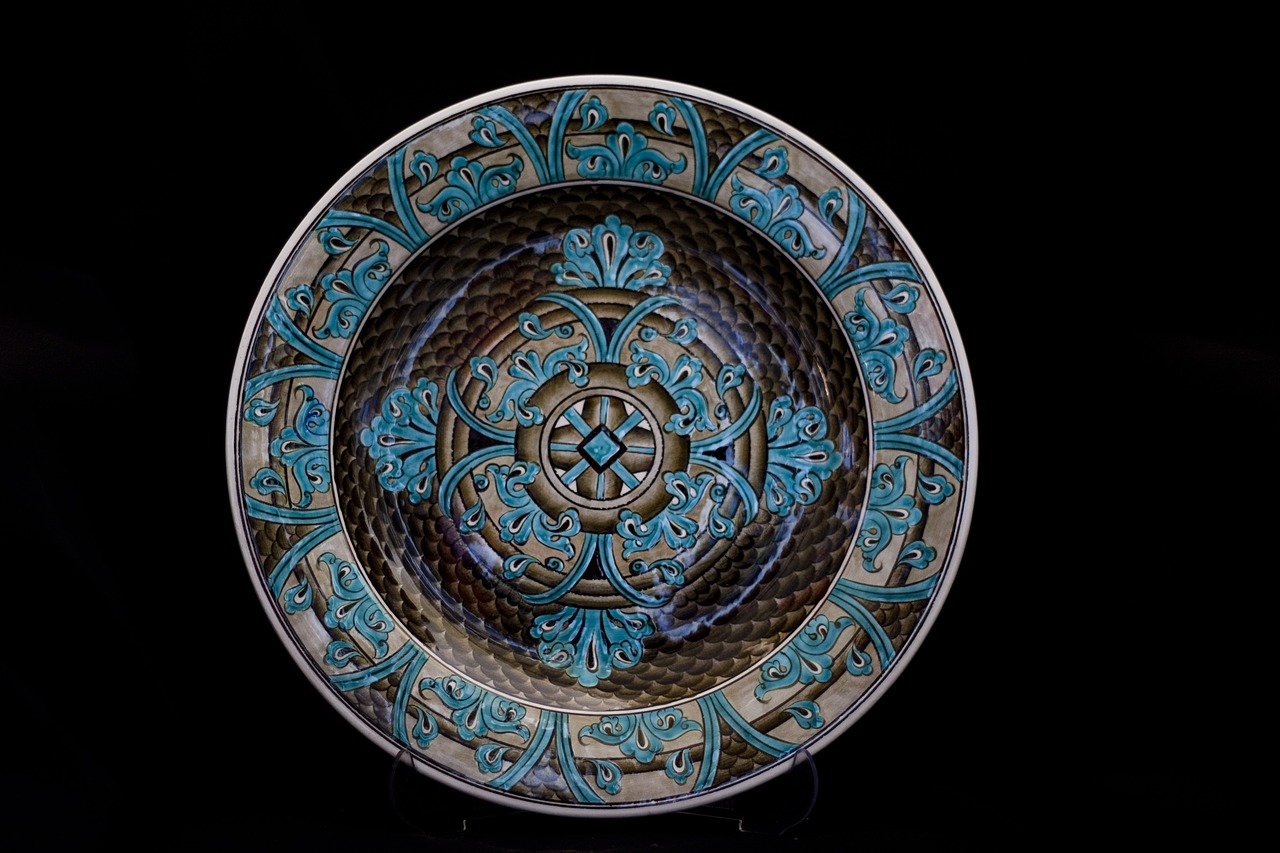
Personal Connection to the Medium
Working with clay fosters a deep personal connection between the artist and the medium. This relationship is unlike any other; it’s as if the artist is not just creating a piece of art, but rather engaging in a dialogue with the very material itself. When you mold clay with your hands, you’re not just manipulating a substance; you’re pouring your thoughts, emotions, and experiences into it. This intimate process can lead to a greater emotional investment, resulting in more meaningful artistic outcomes.
Imagine sitting at a potter's wheel, the cool, damp clay spinning beneath your hands. With each turn, you feel the mass transform, responding to your touch and intention. This tactile experience creates a bond that is both physical and spiritual. The act of shaping clay can be meditative, allowing artists to reflect on their thoughts and feelings. It’s a journey of self-discovery, where each piece tells a story that is uniquely yours.
Moreover, ceramics often serve as a canvas for storytelling. Artists can embed their personal narratives, cultural references, and emotional experiences into their work. For instance, a vase might not just be a vase; it could represent a cherished memory, a cultural heritage, or a personal struggle. The glaze, the texture, the shape—all these elements contribute to a narrative that resonates with both the creator and the audience. This storytelling aspect enhances the creative process, allowing artists to communicate deeper meanings through their work.
Additionally, the cultural significance of ceramics across various societies plays a vital role in how artists connect with their medium. Ceramics have been used for centuries as a means of preserving traditions and conveying stories. By drawing inspiration from these rich cultural roots, artists can infuse their work with historical context and personal interpretation. This connection to heritage adds layers of meaning to their creations, making the artistic process not just about individual expression but also about connecting with a broader community.
Ultimately, the personal connection to ceramics is a blend of tactile engagement, emotional investment, and cultural storytelling. Each piece of pottery or sculpture becomes a reflection of the artist's journey, a tangible manifestation of their thoughts and feelings. The act of creating with clay is not just about the final product; it’s about the entire experience—the messiness, the imperfections, and the joy of bringing something new into the world. This is what makes ceramics such a powerful medium for expressing creativity.
- What are some common techniques used in ceramics? Techniques like handbuilding, wheel throwing, and glazing are widely used by ceramic artists to create various forms and finishes.
- Can anyone learn ceramics? Absolutely! Ceramics can be learned by anyone, regardless of skill level. Many community centers and studios offer classes for beginners.
- What tools do I need to start working with clay? Basic tools include a rolling pin, cutting wire, a sponge, and various shaping tools. As you progress, you can invest in more specialized equipment.
- How do I choose the right type of clay? The type of clay depends on your project. Earthenware, stoneware, and porcelain each have unique properties suited for different styles.
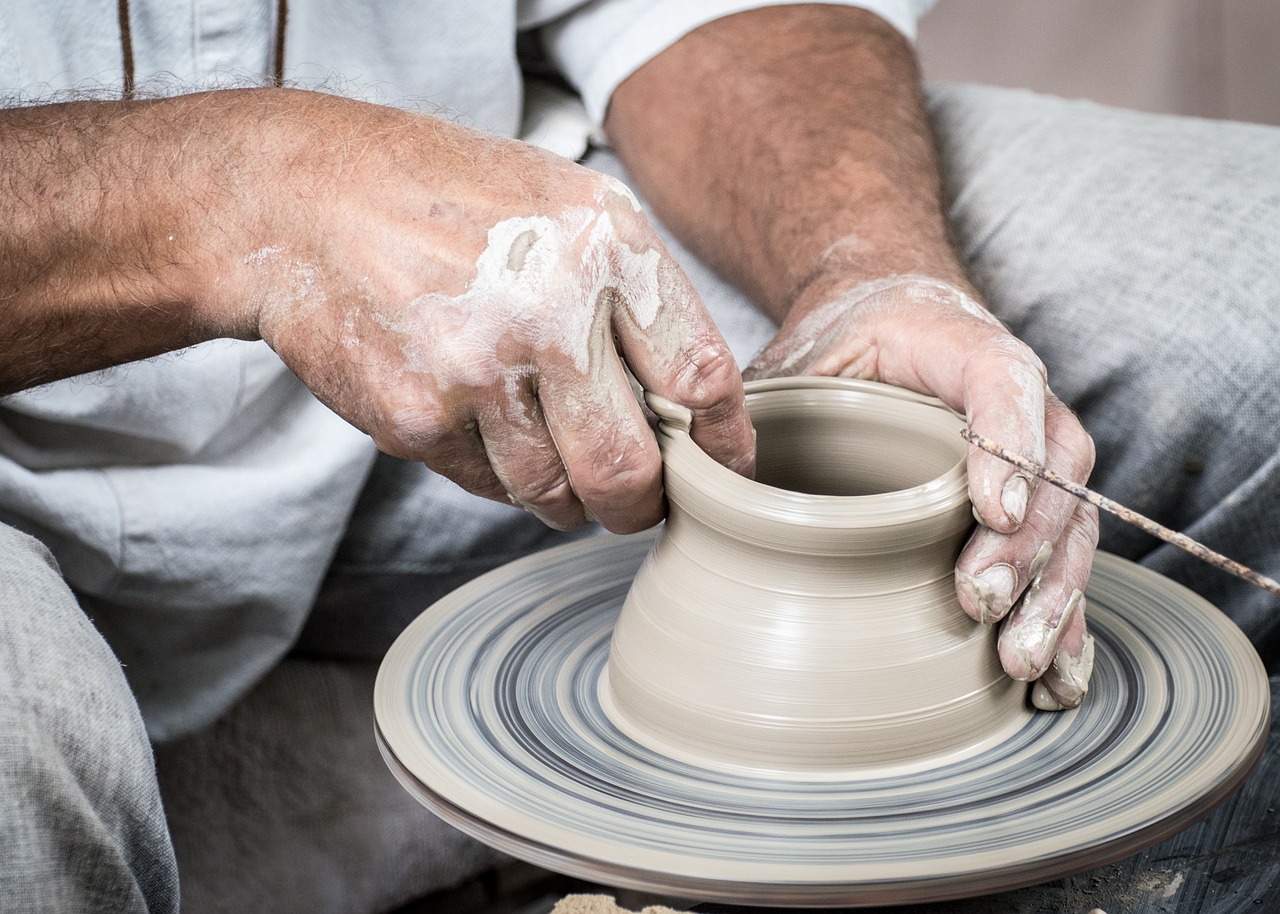
Storytelling Through Ceramics
When we think about art, we often imagine paintings hanging in galleries or sculptures displayed in museums. However, ceramics possess a unique ability to tell stories through their forms and finishes. Each piece of ceramic art is not just a creation; it is a narrative woven from the artist's experiences, emotions, and cultural background. Imagine a beautifully crafted vase adorned with intricate patterns that reflect the artist's heritage. Each swirl and curve can represent a chapter of their life, a significant event, or a cultural tradition passed down through generations.
In the realm of ceramics, storytelling is not limited to visual aesthetics. The tactile nature of clay allows artists to embed their stories physically within their work. For instance, an artist might use specific textures or colors to symbolize personal milestones or collective memories. This personal touch transforms a simple ceramic object into a vessel of meaning, inviting viewers to connect on a deeper level. As you run your fingers over the surface, you can almost feel the artist's journey, their struggles, and their triumphs.
Moreover, ceramics often serve as a medium for cultural storytelling. Across different societies, pottery has played a significant role in preserving traditions and sharing narratives. For example, indigenous cultures have utilized ceramics to convey historical events, spiritual beliefs, and communal values. These pieces become a bridge between the past and present, allowing contemporary artists to draw inspiration from their cultural roots while adding their unique interpretations. In this way, ceramics not only reflect individual stories but also contribute to the broader tapestry of human experience.
To illustrate this point, consider the following examples of how ceramics can tell stories:
- Personal Narratives: An artist may create a series of bowls that represent different stages of their life, each one reflecting a specific emotion or event.
- Cultural Heritage: Ceramics adorned with traditional motifs can serve as a reminder of an artist's ancestry, celebrating their roots while educating others about their culture.
- Environmental Reflections: Some artists use clay to comment on environmental issues, crafting pieces that symbolize nature's beauty or the impact of pollution.
Ultimately, the storytelling aspect of ceramics enriches the creative process, allowing artists to explore their identities and share their narratives with the world. Each piece becomes a dialogue between the artist and the observer, inviting interpretations and fostering connections. So, the next time you admire a ceramic work, take a moment to ponder the story behind it. You might just uncover a rich tapestry of emotions, history, and culture waiting to be discovered.
Q1: What makes ceramics a unique storytelling medium?
A1: Ceramics allow artists to embed their personal narratives and cultural histories into their work, making each piece a unique representation of their experiences.
Q2: How can I start telling my story through ceramics?
A2: Begin by exploring different techniques and styles that resonate with you. Consider what aspects of your life or heritage you want to express, and let that guide your creative process.
Q3: Are there specific techniques that enhance storytelling in ceramics?
A3: Techniques like glazing, texture application, and handbuilding can all contribute to the storytelling aspect by adding layers of meaning and personal touch to the final piece.

Cultural Significance
Ceramics have been an integral part of human civilization for thousands of years, serving not only as functional items but also as vessels of culture and tradition. From ancient pottery found in archaeological sites to contemporary art pieces that challenge the norms, the significance of ceramics transcends mere aesthetics. They are a canvas upon which stories, beliefs, and histories are painted, allowing artists to express their cultural identities and personal narratives.
In many cultures, ceramics are not just artistic expressions but also vital components of rituals and ceremonies. For instance, in Native American communities, pottery is often used in spiritual practices and is imbued with symbolism that reflects the community's relationship with nature. Similarly, in Japanese culture, the art of tea ceremony is deeply intertwined with ceramics, where each piece of pottery is carefully chosen to enhance the experience of mindfulness and appreciation for beauty. The significance of ceramics is further highlighted by their ability to preserve traditions.
Throughout history, different cultures have developed unique ceramic styles, each with its own techniques, motifs, and purposes. Here are a few notable examples of how ceramics reflect cultural significance:
- Mexican Talavera Pottery: This vibrant ceramic style showcases intricate designs and bright colors, often depicting local flora and fauna, and is a symbol of Mexican heritage.
- Chinese Porcelain: Renowned worldwide, Chinese porcelain represents centuries of craftsmanship and has influenced global ceramic traditions.
- Italian Majolica: This tin-glazed pottery is characterized by its colorful designs, often inspired by historical events and local legends, reflecting the rich history of Italy.
The cultural significance of ceramics also extends to their role in storytelling. Each piece can convey a narrative, whether it’s a family heirloom passed down through generations or a contemporary sculpture that comments on social issues. Artists often use their work to challenge preconceived notions and spark conversations about identity, belonging, and history. In this way, ceramics become not just objects, but powerful mediums for dialogue and understanding.
Moreover, as globalization continues to influence artistic practices, contemporary ceramic artists often draw inspiration from various cultural traditions, creating hybrid forms that reflect a blend of influences. This cross-pollination enriches the art form, allowing for a broader exploration of identity and expression. It’s fascinating to see how artists can honor their heritage while also embracing new ideas, making ceramics a dynamic and evolving medium.
In conclusion, the cultural significance of ceramics is profound and multifaceted. They serve as a bridge connecting the past and present, allowing artists to express their identities while preserving cultural narratives. Whether through traditional techniques or innovative approaches, ceramics continue to play a vital role in shaping and sharing our collective human experience.
- What is the history of ceramics? Ceramics date back to prehistoric times, with the earliest known pieces dating to around 29,000 BC. They have evolved significantly across different cultures and eras.
- How do ceramics reflect cultural identity? Ceramics often incorporate traditional techniques, motifs, and stories that are unique to specific cultures, allowing artists to express their heritage and personal narratives.
- Can ceramics be both functional and artistic? Absolutely! Many ceramic pieces serve practical purposes while also being considered works of art, showcasing the versatility of the medium.
Frequently Asked Questions
- What makes ceramics a versatile medium for artists?
Ceramics stands out as a versatile medium because it can be shaped into countless forms, allowing artists to explore different styles and techniques. From functional pottery to intricate sculptures, the possibilities are endless. This adaptability caters to a wide range of creative expressions, making ceramics appealing to both amateur and professional artists.
- How does the tactile nature of clay enhance creativity?
The tactile experience of working with clay invites hands-on engagement, which encourages artists to connect deeply with their materials. This sensory interaction fosters spontaneity in the creative process, often leading to unexpected and delightful outcomes. When artists can feel the texture and weight of the clay, they are more likely to make intuitive decisions that enhance their work.
- What are some popular handbuilding techniques in ceramics?
Handbuilding techniques like pinch pots, coil building, and slab construction are popular among ceramic artists. Each method offers unique opportunities for creativity: pinch pots allow for organic shapes, coil building enables intricate designs, and slab construction provides a canvas for flat surfaces. These techniques encourage experimentation, making them ideal for personal expression.
- Why is glazing important in ceramics?
Glazing is crucial because it adds color, texture, and finish to ceramic pieces, significantly expanding creative possibilities. Artists can experiment with various glazing methods, achieving unique effects that make each piece a distinct representation of their vision. The right glaze can transform a simple form into a stunning work of art.
- How does working with clay create a personal connection for artists?
When artists work with clay, they often develop a deep personal connection to the medium. This relationship can lead to greater emotional investment in their work, resulting in more meaningful artistic outcomes. The process of shaping and molding clay allows artists to express their feelings and experiences, creating a bond between the creator and their creation.
- Can ceramics tell stories?
Absolutely! Ceramics often tell stories that reflect the artist's experiences, culture, and emotions. This narrative aspect enhances the creative process, allowing artists to communicate deeper meanings through their work. Each piece can serve as a vessel for storytelling, making ceramics not just an art form but also a means of preserving and sharing personal and cultural narratives.
- What cultural significance do ceramics hold?
Ceramics have significant cultural importance across various societies. They serve as a medium for preserving traditions, storytelling, and even rituals. Artists can draw inspiration from these cultural roots, infusing their work with historical context and personal interpretation, thus enriching the artistic dialogue between past and present.



















